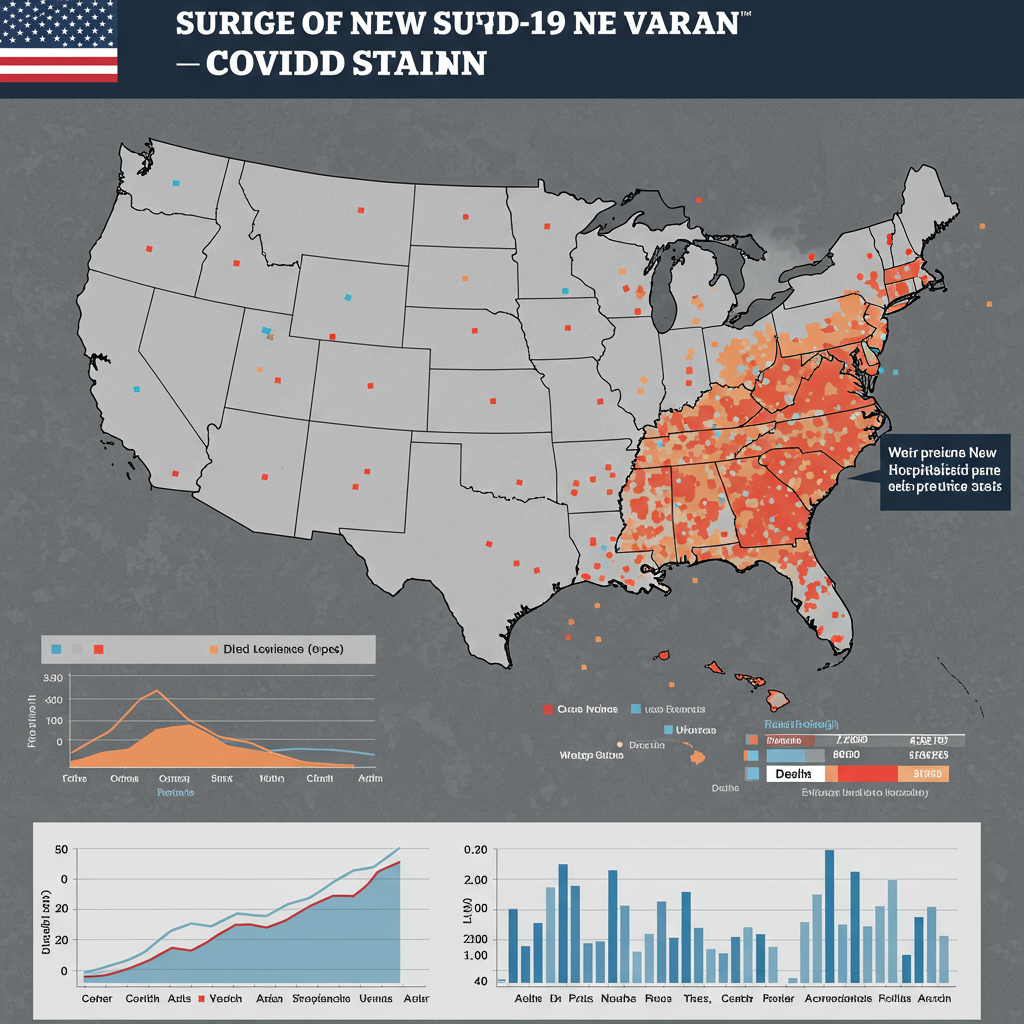A new COVID-19 variant, known scientifically as NB.1.8.1 and sometimes nicknamed “Nimbus,” is rapidly increasing its footprint across the United States, raising the possibility of a summer rise in cases. According to the latest data from the Centers for Disease Control and Prevention (CDC), this swift-spreading variant now accounts for a significant portion of COVID-19 infections nationwide.
As of early June, the CDC’s estimates suggest NB.1.8.1 is likely responsible for about 37% of all COVID-19 cases in the U.S. This places it just slightly behind the currently most prevalent variant, LP.8.1, which accounts for an estimated 38%. This marks a dramatic increase for NB.1.8.1, which was first detected in the U.S. in late March and rapidly grew from a small percentage in the previous month to become a near co-dominant strain. While the CDC notes the precision of these early figures can be “low” due to limited sequencing data, the trend of rapid growth is clear.
Tracking a Variant on the Rise
Globally, the World Health Organization (WHO) began monitoring NB.1.8.1 in mid-May, though it was initially identified as early as late January. Since then, it has spread rapidly worldwide. By early June, NB.1.8.1 was estimated to make up about a quarter of all global cases reported to the WHO, a sharp increase from just 10% a few weeks prior and 2% a month earlier. This rapid ascent globally has been linked to recent surges in cases and hospitalizations in parts of Asia, including China.
Understanding NB.1.8.1: Transmissibility and Severity
NB.1.8.1 is a descendant of the recombinant Omicron variant XDV.1.5.1. Like many new variants, it carries several mutations in its spike protein. Early, non-peer-reviewed research suggests these mutations might enhance its ability to bind to human cells, potentially making it more transmissible than other circulating strains and giving it the “potential for future dominance.” While experts believe it is likely more transmissible based on its observed rapid spread and mutations, a definitive comparison to other strains is still premature.
Crucially, despite its potential for increased spread, health experts and the WHO currently indicate there is no evidence that NB.1.8.1 causes more severe illness on average compared to other Omicron-descendant variants circulating today. Symptoms associated with Nimbus appear similar to those of recent Omicron strains, including sore throat, cough, runny nose, fatigue, headache, and body aches. It’s important to remember that individuals over 65, those who are immunocompromised, and people with underlying health conditions remain at higher risk for severe outcomes from any COVID-19 infection.
The Summer Outlook
As of early June, overall COVID-19 trends in the U.S. remained relatively stable, with test positivity rates around 3% and hospitalizations and deaths staying low. However, experts point out that the U.S. has historically seen increases in COVID-19 activity during the summer months. The unusually quiet period of low circulation last winter could potentially set the stage for a more noticeable increase this summer.
Factors contributing to a potential surge include waning population immunity over time – even with an estimated 90% of Americans having some immunity from prior infection or vaccination – combined with the emergence of potentially more transmissible variants like NB.1.8.1 and increased social activity and travel during the summer. While a significant surge is possible, some experts anticipate that due to existing population immunity, any summer wave might be less severe than those experienced earlier in the pandemic before 2023.
Protection and Vaccination
The good news is that because NB.1.8.1 is an Omicron descendant, updated vaccine boosters are still expected to provide protection, particularly against severe illness, hospitalization, and death. The 2024-2025 COVID-19 vaccines remain available and recommended for most eligible adults. Looking ahead, the 2025-2026 vaccines, designed to target the LP.8.1 variant, are slated for a fall release with updated guidelines, likely focusing recommendations on older adults and those with underlying conditions.
While the landscape of COVID-19 has changed significantly since the early pandemic thanks to vaccination and population immunity, the virus continues to evolve and spread. The rapid rise of variants like NB.1.8.1 serves as a reminder that COVID-19 remains an ongoing public health concern. Maintaining protective measures such as testing when symptomatic, isolating when sick, and considering masking in crowded indoor settings can help mitigate the spread and impact of emerging variants.



